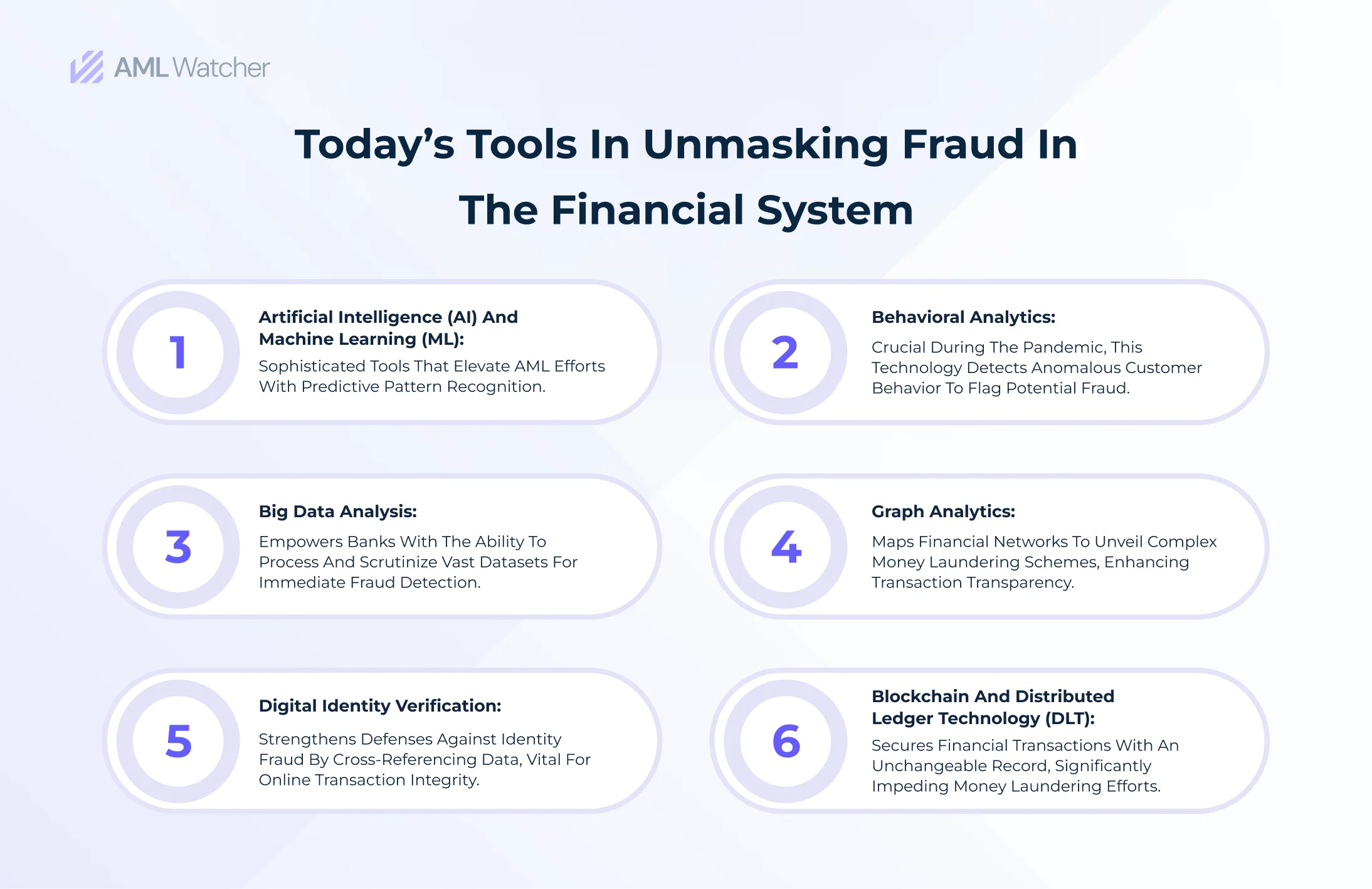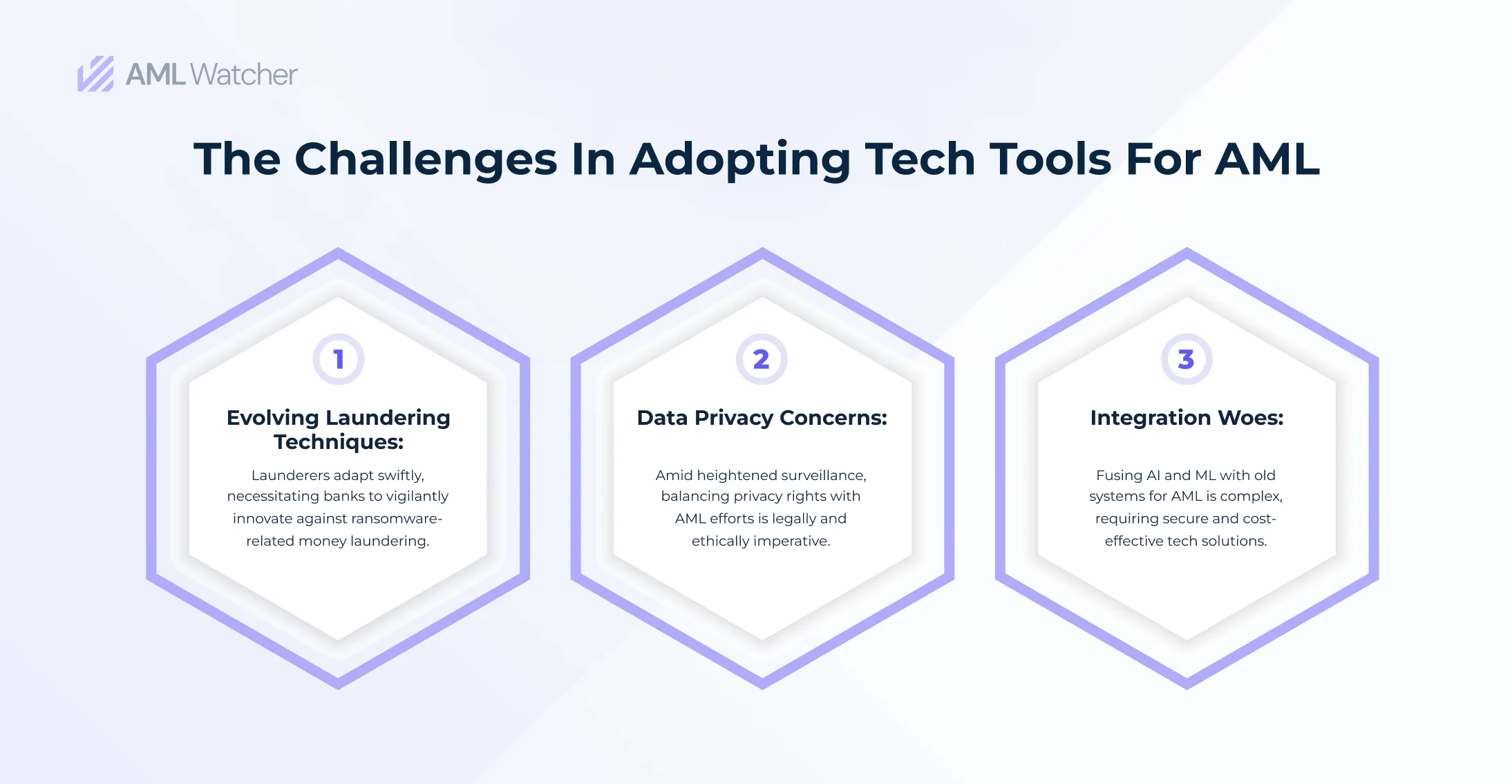
Deciphering Digital Footprints: Technological Aids in Unmasking Smurfing and Structuring in Today’s Banking Ecosystem
The traditional cat-and-mouse game between regulators and money launderers turns into a challenging digital conundrum in the never-ending game of financial cleverness. Large quantities of money are deftly moved by money launderers; up to $2 trillion is allegedly laundered worldwide each year, and $300 billion in the United States. 90% of money laundering operations in this digital sphere go undetected when they switch from physical banknotes to digital transactions, making it difficult for regulators to use innovative technology to stop these crimes. Conventional methods of money laundering such as “smurfing” and “structuring” have changed. The electronic impulses of our financial systems have given these methods a fresh lease of life as they have smoothly adapted to the digital era. One drug trafficker, for example, was recently sentenced to prison for structuring. In order to evade regulatory attention, the trafficker had hidden the earnings from drug sales through a number of modest bank transactions. In an increasingly digital financial environment, these timeless tactics force financial guardians to continually adapt in a high-stakes fight to outsmart money launderers.
Studying the tools which can help the financial system in discovering smurfing and structuring easily is crucial. This will give a better idea of how the regulatory environment is changing and adapting to technology.
The Digital Arsenal: Technological Tools in the Fray
Artificial Intelligence (AI) and Machine Learning (ML):
These technologies make use of sophisticated algorithms that can examine enormous amounts of transactional data. They frequently identify abnormalities and patterns—often more quickly and accurately than human analysts—that might point to money laundering. 57% of anti-money laundering experts surveyed, which are the members of ACAMS, are using or testing artificial intelligence (AI) and machine learning (ML) in their compliance activities. These technologies are recognized for their ability to quickly and intelligently integrate into existing compliance frameworks and adapt to new threats. This allows financial institutions of all sizes to enhance their monitoring strategies beyond traditional rule-based systems. These algorithms continuously become better by absorbing new information and grow more skilled at identifying even the smallest clues of illicit activity.
Behavioral Analytics:
This tool examines the actions of banking customers to determine what constitutes typical behavior for each individual customer. Alerts may be triggered when a transaction or sequence of transactions departs noticeably from this predetermined standard. Behavioral analytics became even more important during the pandemic when banks moved to more online operations and fraud instances increased. Identity theft cases in the United States doubled to over 1.4 million in 2020. Because these strategies usually entail behavioral patterns that deviate from a client’s ordinary financial activity, this is especially helpful in spotting smurfing or structuring.
Big Data Analysis:
With the explosion of data available, banks and financial institutions can now use big data analytics to process and analyze vast datasets quickly. This capability allows them to detect suspicious transactions as they occur, rather than after the fact, which is critical in the timely prevention of money laundering.
Graph Analytics:
Graph analytics is the process of visually mapping interactions and transactions between entities and individuals in order to identify complex networks that are involved in structuring schemes. Graph analytics, for example, can detect when a drug dealer tries to get around bank rules by splitting up big cash transactions into smaller ones, therefore avoiding the amount that would result in a Suspicious Activity Report (SAR). Graph analytics may identify the stacking of transactions intended to hide unlawful activity in a way that standard monitoring systems would not be able to by seeing deposits made into various accounts, moved to intermediate accounts, and then consolidated into a single account. It aids in comprehending the financial flow and spotting any cooperation or numerous accounts held by the same people or organizations.
Digital Identity Verification:
Adequate reliable digital identity verification methods are needed to stop fraudsters from exploiting stolen or fictitious identities, which is a typical strategy used by “smurfs.” For example, widespread fraud involving pandemic relief funding presented considerable issues for U.S. state authorities during the epidemic. Since many applications and payments are now made online, there are more chances for bad actors to take advantage of loopholes in identity verification procedures. This can result in false claims and the theft of benefits from eligible users. Therefore, in order to confirm the validity of people doing financial transactions, digital identity verification technologies, cross-references provided identities with other databases and platforms.
Blockchain and Distributed Ledger Technology (DLT):
The FATF’s “Travel Rule” requires Virtual Asset Service Providers (VASPs) to collect and share personal information for cryptocurrency transactions exceeding about 1,000 USD/EUR, aiming to combat money laundering and terrorist financing. Implementing this rule with Distributed Ledger Technology (DLT) confronts challenges in maintaining privacy and security while adhering to regulatory standards. While these technologies are imperative for cryptocurrencies, they also offer a way to keep an immutable ledger of all transactions. The integration of smart contracts enhances this, with algorithms that continuously monitor transactions, automatically flagging and blocking suspicious activities. This characteristic makes it significantly more challenging for money launderers to modify or hide their transaction histories, as each transaction is permanently recorded and visible across the network of users.
Let’s now read through the challenges which accompany the technological tools. Knowing the challenges enables us to devise more solutions to hedge against them.
The Challenges Ahead
Evolving Laundering Techniques:
Money launderers also update their techniques in tandem with financial institutions integrating modern technology into their operations. According to reports from the Financial Action Task Force (FATF), money laundering strategies are always changing, making it difficult for financial institutions to adjust to new risks. For example, the Financial Action Task Force (FATF) has released a study on the money-laundering strategies linked to ransomware payments, implying that as digital payment methods proliferate, so do the channels for money-laundering through cybercrime. The continual development of strategies by both sides transforms the battle against money laundering into an ever-changing war. For banks to stay ahead in this constantly shifting environment, they must thus continue to be watchful and innovative.
This is best illustrated by the example of the Bitfinex case of 2016. 120,000 Bitcoins worth approximately $72 million were stolen and laundered through complex cryptocurrency transactions. This incident led to heightened global regulatory oversight and improved collaboration between financial institutions and law enforcement, emphasizing the need for continuous adaptation in combating sophisticated money laundering techniques.
Data Privacy Concerns:
A major problem in modern society is the conflict between advanced financial monitoring and the right to personal privacy, particularly as technologies improve in sophistication. A proposal to limit how financial institutions handle customer data was issued by the Consumer Financial Protection Bureau (CFPB) in response to this problem. The plan highlights the need for a careful balance between safeguarding personal information and keeping an eye out for illegal activity. In a similar vein, a United Nations assessment has cautioned that networked digital technologies, which act as effective instruments for surveillance and have the potential to be exploited for control and oppression, are placing increasing strain on the right to privacy. Protecting personal information is required by law and ethics, even when organizations step up their surveillance to prevent money laundering.
Integration Woes:
It is not easy to integrate advanced AI and ML techniques into anti-money laundering (AML) processes, especially when interacting with outdated financial systems. Large-scale data processing and storage are necessary for next-generation AML technology, which sometimes calls for costly technological expenditures that may be beyond the means of certain institutions. In risk-averse financial institutions, cloud computing solutions are also generally met with reluctance, particularly from compliance departments who are hesitant to transfer sensitive customer data to cloud services. In order for such technology to be used, data security concerns must be resolved and regulators must be educated on AI technology. Although these technologies have demonstrated the capacity to boost productivity, their application in AML systems is still in its infancy, and they have drawbacks. Therefore, the difficulty is to make sure that these innovative instruments coexist peacefully with older platforms in order to provide real-time, effective analysis without interfering with operations—a crucial aspect of fast and successful money laundering detection and prevention.
Summing Up
A high-stakes race in digital technology is taking place in the financial industry today as up to $2 trillion is being laundered yearly, with a concerning 90% of it still hidden behind the curtain of digitalization. More than half of experts in the field of anti-money laundering use AI and ML, which are constantly developing to detect even the smallest hint of financial crime. Real-time detection is improved by tools like big data and behavioral analytics, which is especially important because the pandemic increased fraud rates. While sophisticated laundering activities are disrupted by digital identification checks and graph analytics, the banking industry remains vigilant due to the persistent innovation of money launderers. The conflict between privacy rights and constant surveillance is highlighted by the CFPB’s latest proposal. In the midst of the challenging work of integrating cutting-edge AI with outdated systems, it is evident that ongoing technological adaptation is vital. AML Watcher, with its services, reminds us that fighting money laundering in the digital age requires us to do more than simply stay current; rather, we must completely transform the way we see the world and the way we approach financial fraud.
Contact us to incorporate technological tools which will help you in unmasking smurfing and structuring in today’s financial ecosystem.
We are here to consult you
Switch to AML Watcher today and reduce your current AML cost by 50% - no questions asked.
- Find right product and pricing for your business
- Get your current solution provider audit & minimise your changeover risk
- Gain expert insights with quick response time to your queries




